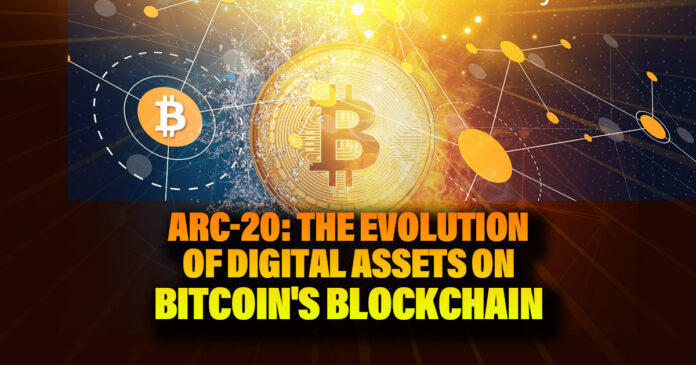ARC-20 is designed to make it easier to create, transfer, and update digital objects. It brings in a new idea similar to Non-Fungible Tokens (NFTs).
Notably, Atomicals bring a new dimension to the Ordinals narrative that has dominated discussions in 2023. It providing a structured approach to organizing digital property on the Bitcoin network. Let’s discover more about this new development.
Atomicals (ARC-20): Transforming Digital Assets on the Bitcoin Blockchain
One of its features is the prevention of Atomicals from being misused as miner fees, ensuring that the protocol is used for its intended purpose. However, the real gem lies in the simplified verification process. It allows easy transaction confirmation and identification of the current owners.
Bitcoin has a new protocol: Atomicals
Also known as ARC-20, it's designed to facilitate the minting, transferring, and updating of digital objects. But don't call them Ordinals!
Take a deep dive on @atomicalsxyz in our latest blog post 👇https://t.co/Fi5vPkC7jR
— Trust Machines (@trustmachinesco) December 30, 2023
The applications of Atomicals are impressively diverse, extending beyond traditional NFT use cases. From digital collector’s items to virtual real estate, social media profiles, and in-game objects, Atomicals showcase their versatility.
Each ARC-20 asset carries its entire lineage, documenting every transfer from creation onwards. This eliminates the need for a centralized indexing service, providing a transparent and decentralized history for each object. This feature significantly enhances security in the system, addressing concerns related to the ownership of digital assets.
ARC-20 vs BRC-20
Atomicals (ARC-20) are designed to complement and synergize with existing protocols like Ordinals and Nostr. One fundamental advancement is the capacity to store multiple files upon minting, a stark contrast to the BRC-20 protocol’s limitation to handling only a single file.
📢Big update! #UniSat Marketplace now proudly supports #ARC20!🔥
🚀Explore the newly added ARC20 assets on UniSat Marketplace and enhance your trading experience with more options available now! pic.twitter.com/YKhOYZrL41
— UniSat Wallet – Store, Inscribe and Search. (@unisat_wallet) December 29, 2023
Also, while Ordinals allow state definition on an application-specific basis, Atomicals take this a step further by enabling state definition and updates for both basic and complex file types. This flexibility represents a significant leap forward in the management of digital assets, offering users a more dynamic and adaptable system for handling various types of content.
It’s important to say that Ordinals and Atomicals needs the use of P2TR Taproot addresses for minting and updating the content of the assets. However, Atomicals set themselves apart by not requiring these addresses for the transfer process. This simplifies the transfer process and broadens accessibility, making it easier for a broader audience to engage with Atomicals.
#BitMart is thrilled to announce the primary listing of #ATOM ( #ATOMARC) 🔥
💰Trading pair: $ATOMARC/USDT
💎Deposit: Available
💎Trading: Will be available after 1,000 $ATOMARC are deposited$ATOM is the first demonstration fungible token of the ARC20 protocol launched at… pic.twitter.com/OF8Y6mddCk— BitMart (@BitMartExchange) December 26, 2023
Conclusion
The Atomicals Theory (ARC-20) represents a significant evolution of digital assets in the Bitcoin ecosystem. It offers a different approach to managing digital property. So, ARC-20 tokens have the potential to reshape how we perceive and interact with digital assets on the blockchain.
Disclaimer
The information discussed by Altcoin Buzz is not financial advice. This is for educational, entertainment, and informational purposes only. Any information or strategies are thoughts and opinions relevant to the accepted levels of risk tolerance of the writer/reviewers and their risk tolerance may be different than yours. We are not responsible for any losses that you may incur as a result of any investments directly or indirectly related to the information provided. Bitcoin and other cryptocurrencies are high-risk investments so please do your due diligence. Copyright Altcoin Buzz Pte Ltd.





























